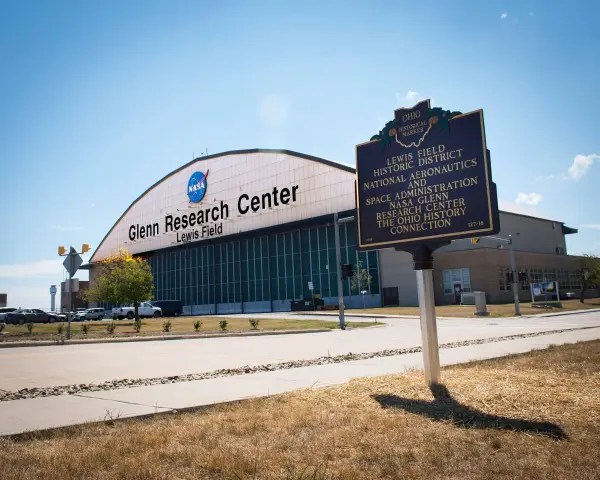
NASA’s Historic Properties
The National Historic Preservation Act (NHPA) defines Historic Properties as buildings, structures, sites, objects, and districts that are listed on, or eligible for listing on, the National Register of Historic Places (NRHP).
Historic Buildings
Archaeological Sites
Built Environment
NASAs currently stewards approximately 475 historic buildings, structures, and objects, including approximately 20 National Historic Landmarks (NHLs). NASAs historic built environment include such notable buildings as the Vehicle Assembly Building (VAB) at KSC, the Mission Control Center at JSC, Hangar One at ARC, and wind tunnels at ARC and GRC. Historic structures include the launch pads at KSC and WFF, the test stands at SSC and MSFC, the gantry at LaRC, and the large-scale antennae at JPL-GDSN. Other notable historic built resources include the Shuttles (Orbiters) and the countdown clock and flagpole at KSC.
Historic Districts
The NHPA defines a historic district as a collection of one or more of the previous resource types that is distinguished as a significant concentration, linkage, or continuity of properties that are united historically or aesthetically by their common design or development. Seventeen historic districts have been identified at NASA across nine Centers. At several Centers, including GRC, GSFC, JPL, JSC, and LaRC, the historic district encompasses all or nearly all of the Center; at others (AFRC, ARC, KSC, WSTF), the district boundaries only encompass parts of the Center.
Archaeology
Archaeological resources are protected under the NHPA, the Archaeological Resources Protection Act (ARPA), and, when the resources are Native American (pre-contact), the Native American Graves Protection and Repatriation Act (NAGPRA). NASA has identified approximately 400 archaeological sites across several Centers, dating to both pre- and post-contact. Approximately 240 of those sites have been determined eligible for listing on the NRHP; however, NASA also manages all of its potentially eligible archaeological resources as though they were eligible.
When there is potential for impacts to resources that are significant to Native American Tribes, NASA consults with the Tribe(s) on a Government-to-Government level, and makes every effort to avoid, minimize, or mitigate those impacts. All recovered resources are curated in accordance with 36 CFR 79, Curation of Federally-Owned and Administered Archeological Collections
























